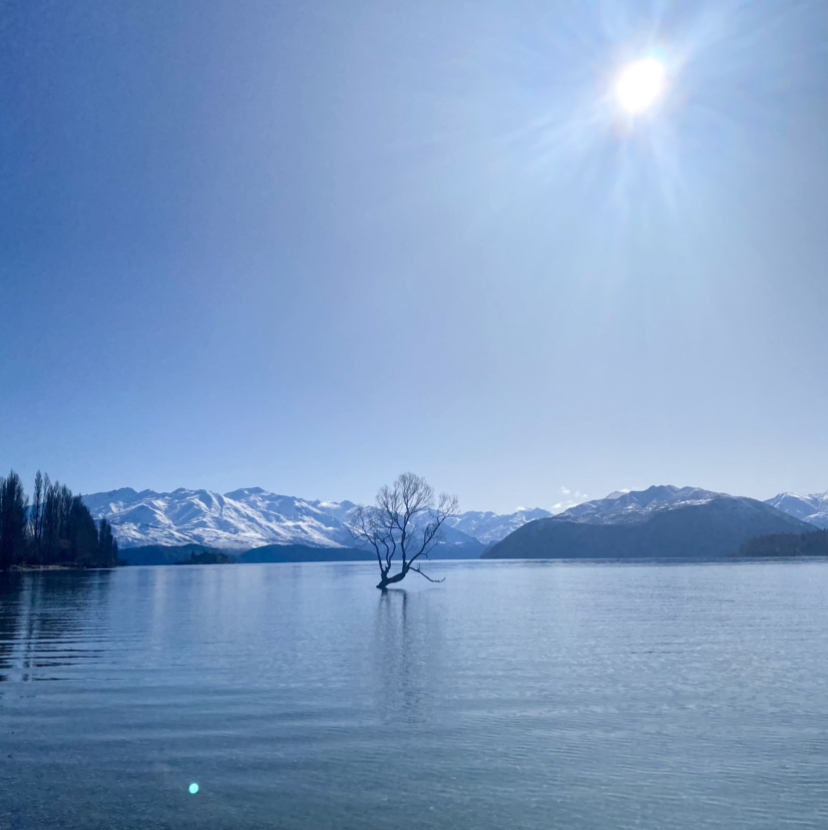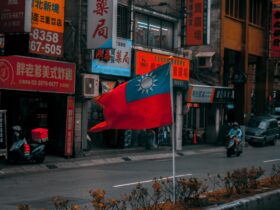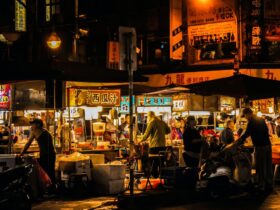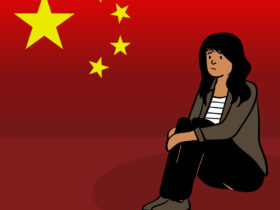“I can’t go back even if I wanted to. After [COVID-19], we are all like the Wanaka tree”.
On Aug. 1, 2022, New Zealand officially reopened its border to visitors from all over the world for the first time since March 2020, when the country was placed on lockdown and non-residents were denied entry.
I landed at Auckland International Airport on Aug. 5, 2022, as one of the first non-Australian foreign visitors (New Zealand lifted border restrictions for travelers from non-visa countries, including Australia, in April). My parents’ friends J and A, who had worked in the tourism industry for the past ten years, picked me up from the airport and decided to give me their “final tour” of the country. Both of them became realtors in 2021, one year after COVID-19.
COVID-19 has undoubtedly impacted major industries in every country, and New Zealand is no exception. Tourism made up 5.8% of New Zealand’s GDP in 2019, with an added indirect contribution of 3.8%.
The highlight of my stay in New Zealand would be our trip to Queenstown, the renowned tourist spot for adventurers. We visited “Cody’s,” a Chinese restaurant owned by a Chinese couple who migrated to New Zealand 20 years ago. They took over the restaurant in 2017 and made a great profit thanks to a large number of Chinese tourists.
After COVID-19 hit, the restaurant struggled — revenue could not even cover monthly rent. In the past three years, they used up savings from the past years to keep the business afloat. At one point, the couple let all the staff go and did everything themselves.
These measures have allowed the restaurant to survive the pandemic. Though after the border reopened, the restaurant is now facing a new challenge: they are understaffed and are having trouble hiring people. Similarly, many businesses struggled to stay open since the pandemic, and most of the owners’ friends left the hospitality industry, some even returning to China.
“All of our coworkers and friends had to change professions. Many of our previous employees now work as couriers for Amazon or cashiers at grocery stores. There is nothing you can do; it’s the biggest economic shock in my living memory,” said J. In fact, in the first year of the pandemic, 33.1% of tourism workers lost their jobs in the country.
Industries are changing fast and closely connected to one another. Once you leave an industry, it is extremely difficult to go back. In order to provide the best experiences, tourist agents need connections in the hospitality and transport industries. Once their old connections were lost due to Covid, they needed to build new ones to maintain business, which requires years of hard work.
“I can’t go back even if I wanted to. After [COVID-19], we are all like the Wanaka tree”, said J. The Wanaka tree is a willow tree located on the edge of lake Wanaka on New Zealand’s south island. Ironically, as a major tourist attraction and symbol of “hope,” the tree was vandalized (several branches were taken off with a saw) in March 2020, after the first covid case was discovered in the country.
New Zealand has also witnessed a rising crime rate due to Covid-related inflation and unemployment. Violent activities have become commonplace, especially in downtown Auckland and central Wellington.
Compared to pre-pandemic levels, New Zealand’s crime rate has risen by 30%. More than 1000 people were assaulted in Auckland’s Central Business District in the first five months of 2021, a 63% increase compared to crime rate levels in 2019. A has lived close to Auckland’s Central Business District for the past 30 years.
“I’ve never felt this unsafe,” said A.
Despite current hardship, the border reopening policy presents much-needed hope and opportunities. The inflow of tourists has in turn generated economic productivity.
During my two weeks of stay, I ran into a perceivable number of travelers from Korea, Taiwan and South America. The number is expected to rise by the day as the skiing season beginning in August attracts enthusiasts. As tourism is a crucial factor for economic revitalization, New Zealand is witnessing a positive economic trend.
Nevertheless, unusual circumstances and challenges still remain. International students have contributed immensely to New Zealand’s economy and development. Chinese students comprise 26.5 % of the total international student population.
Chinese visitors also dominate New Zealand’s overseas travels. In 2019 alone, 407,100 visitors arrived from China. However, China has not shown signs of loosening restrictions on Chinese citizens’ traveling abroad. There is no prediction on when these restrictions will be lifted since the Chinese government remains ambiguous about its border policy.
For New Zealand’s future, there is still a long way to go. People lost not only their jobs but also their friends, connections, or even families. Border reopening may not mean “going back to normal.” The old normal disappeared, and it is the new normal we should be getting used to.







